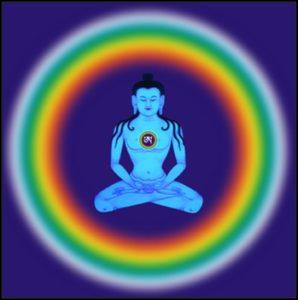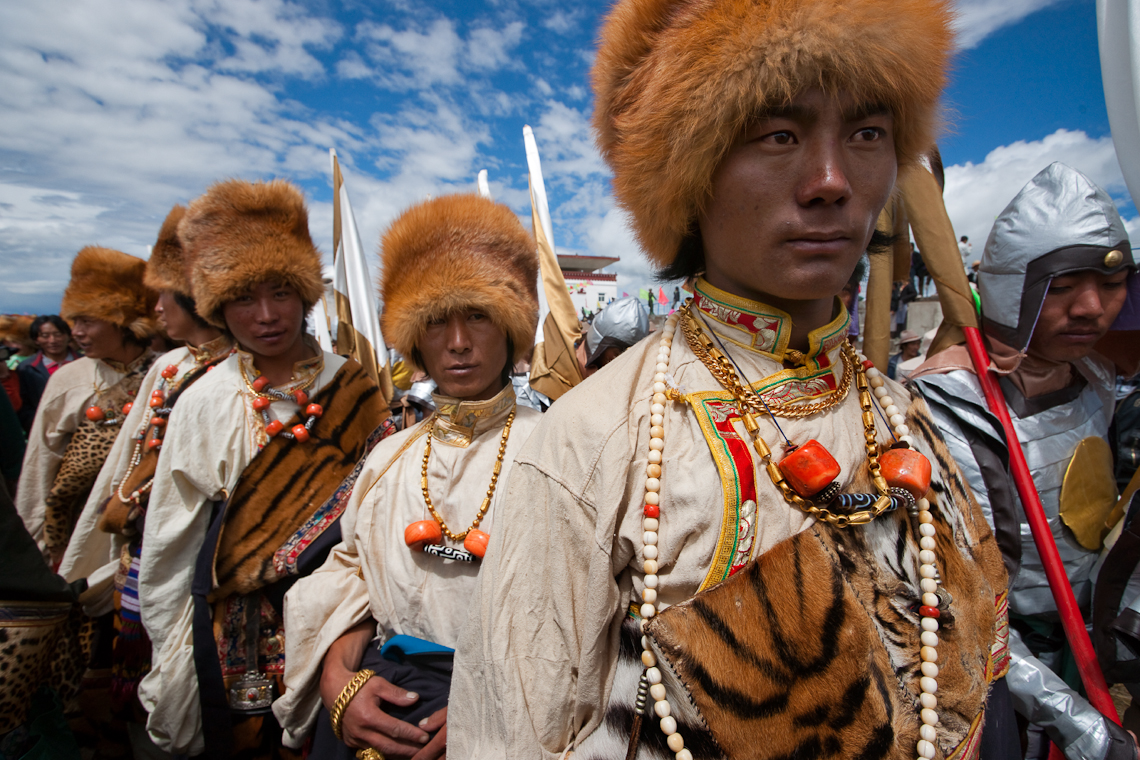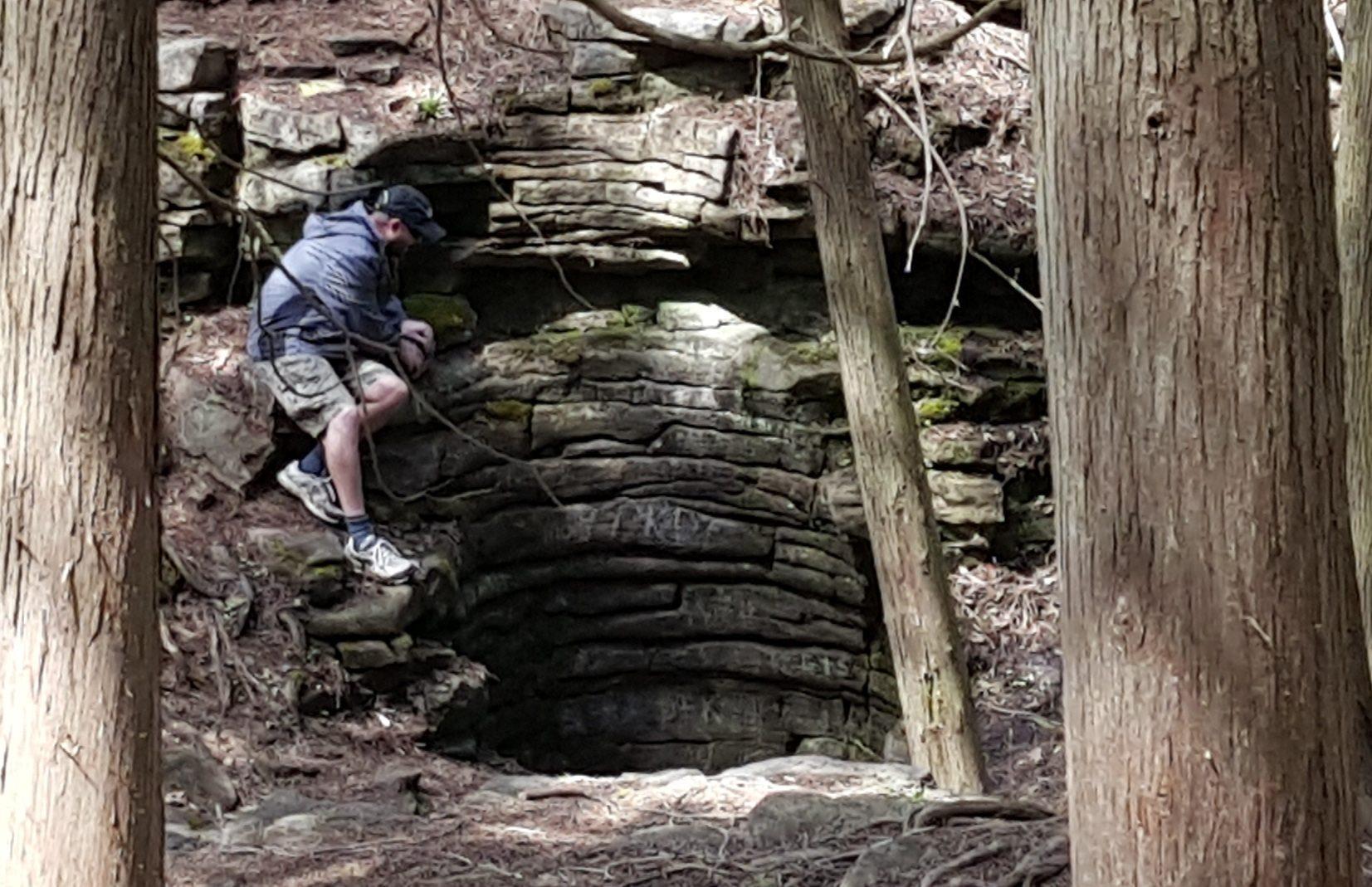Dzogchen:

Dzogchen (Sanskrit: अतियोग), is an esoteric “secret” tradition of teachings in Tibetan Buddhism aimed at attaining and maintaining our natural primordial state. Dzogchen means “Great Perfection,” and Rigpa “Gnosis” is at the core of their lineal teachings, where they provide a series of meditative practices said to aid us in recognizing our true primordial nature.
Dzogchen is used synonymously with the Sanskrit term “ati-yoga,” meaning primordial yoga, and their teachings were first published in the Tibetan Book of the Dead, as it is known in the West. It’s actual name is Bardo Thodol (Liberation Through Hearing During the Intermediate State), and is a text from a larger corpus of teachings, the Profound Dharma of Self-Liberation through the Intention of the Peaceful and Wrathful Ones, revealed by Karma Lingpa between 1326–1386.
The Psychedelic Experience, published in 1964, written by Timothy Leary, Ralph Metzner and Richard Alpert, is said to be loosely based on Evan-Wentz’s translation of the Tibetan Book of the Dead, with which they said,
“The Tibetan Book of the Dead is a key to the innermost recesses of the human mind, and a guide for initiates, and for those who are seeking the spiritual path of liberation”
Teachings:

The early Dzogchen literature is categorized into three categories, with each category containing its own categories therein:
- Semde (Sanskrit: cittavarga), is the “Mind Series,” which first appeared in the 9th century, contains the earliest Proto Dzogchen teachings.
- Longde (Sanskrit: abhyantaravarga), is the “Space Series,” which reflects the developments of the 11th-14th centuries, when new Buddhist techniques and doctrines were introduced into Tibet.
- Menngagde (Sanskrit: upadeshavarga), is the “Secret Oral Instruction Series,” also known as Seminal Heart. This series has since overshadowed the other two, and focuses on two aspects of practice: “kadag trekchö” (the cutting through of primordial purity), and “lhündrub tögal” (the direct crossing of spontaneous presence).
The Dzogchen meditation practices include a series of exercises known as Semdzin, which means “to hold the mind” or “to fix the mind.” They include an entire range of methods, including fixation, breathing, and different body postures, divided into three categories of seven exercises. The main exercises are Trekchö, Tögal, and Rainbow body.
Rainbow Surrounding Tibetan Letter A:

In Chasing Rainbows, Brian Anahata says,
“This circular rainbow surrounding a Tibetan “A” is a Dzogchen symbol called a “thigle.” As a whole, the symbol represents Rigpa, meaning knowledge (Gnosis). Rigpa has two aspects, namely “ka dag” and “lhun grub.” The “A” represents “ka dag,” the primordial purity that is the basic undefiled nature of all beings. “Ka dag” corresponds with the sound “Ahh.”
The circular rainbow, or thigle represents “lhun grub” and it is the spontaneous presence and process of everything. Also, thigles are infinitesimal orbs of light that compose all of reality.
Therefore, the Dzogchen symbol is not just any object of concentration; it is the representation of reality as it is. When we focus on this symbol, we are realizing the purity of our natural being. We do not try to identify with the symbol or project anything on it. Simply by staying focused on the object of concentration, the boundary between it and us dissolves and we realize our inherent oneness.
The rainbow surrounds the white light emanating from our heart like a torus as we connect to the source of our being. The ability to steadily abide with our object of concentration is what ultimately enables us to form our energy body in any realm of the Universe we want. In this form we are in-form-ation, accessing the information of the Universe. When we come to know we are the source, we realize we can leave our physical form anytime to explore the subtler dimension of our being.
Visualizing the Dzogchen symbol helps us achieve a state where we can actually feel the thigle of our energetic body. The “A” is the primordial purity that causes the thigle to arise. The “Ahh” is the supreme syllable because it opens up our heart center. Mentally toning “Ahh” when we are focusing on the Dzogchen symbol is suited for the practice of traveling outside of our body.”
Exercise:
The China Buddhism encyclopedia says,
“Fixate on the white Tibetan letter A on the tip of one’s nose, while linking the letter with one’s breathing, as it goes out into space with each exhalation, and returns to the tip of the nose with each inhalation. This fixation inhibits the arising of extraneous thoughts […] however, the second exercise involves the sounding of the syllable PHAT! which instantly shatters one’s thoughts and attachments. Symbolically, the two parts of the syllable indicate the two aspects of enlightenment, that is, PHA signifies Means (thabs) and TA signifies Wisdom (shesrab).”
This specific Semdzin practice is a direct introduction to the knowledge of Rigpa (Gnosis), by temporarily blocking the flow of thought, and bringing us temporarily into a state of emptiness and clarity. Another accomplishment of tögal practice is the ‘Rainbow Body of Great Transference’ (‘ja’ lus, pronounced Jalü), where the master dissolves his body into rainbow light and lives for centuries in order to benefit others. The Dharma Dzogchen says,
“If you persist, practicing the instructions to transmute the body of this life into a body of light, you will become like a deathless Lotus Born One, the Primordial Buddha.”
© Written by Carrie Love
For supplemental reading material please click the link below:





